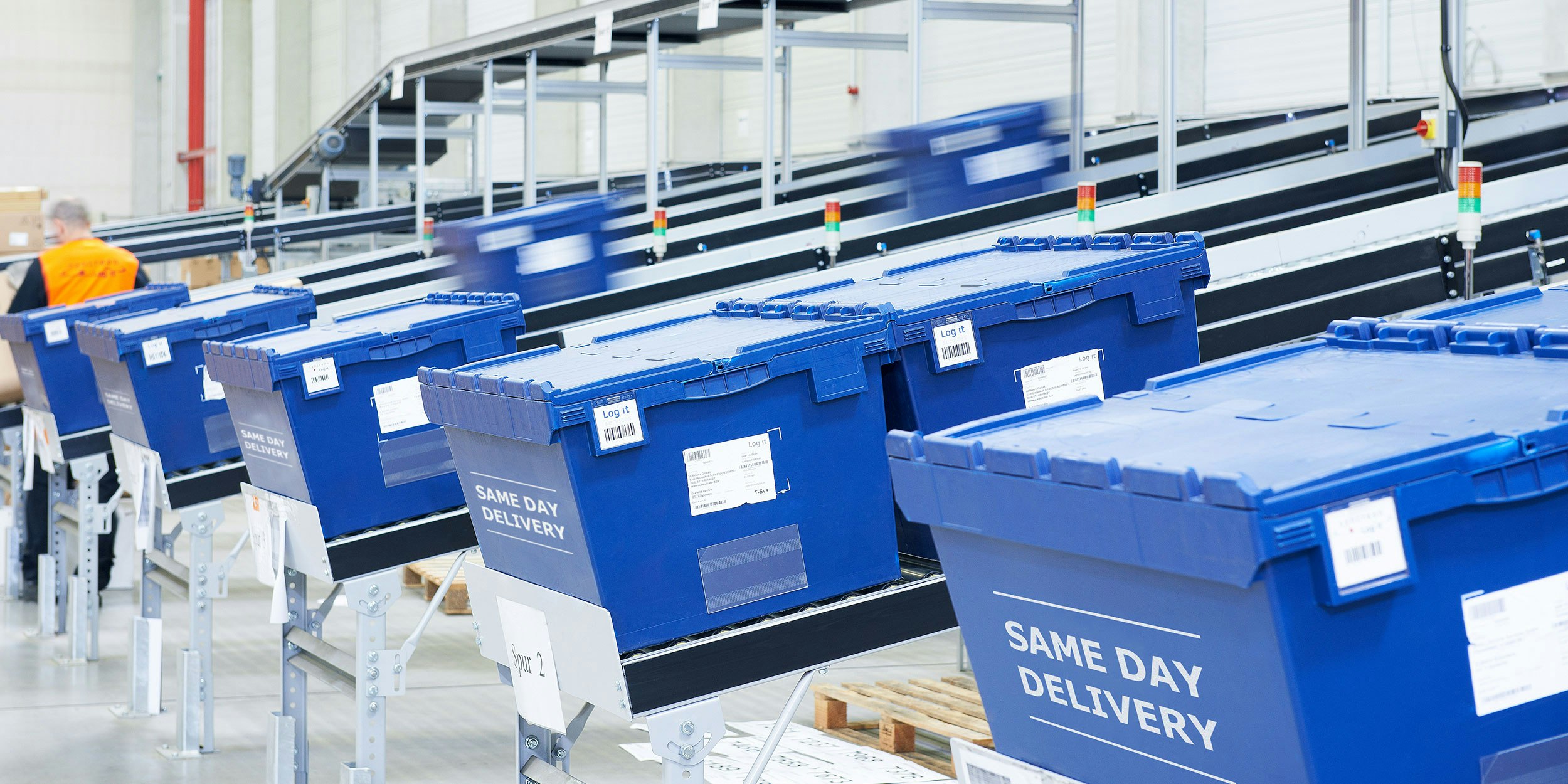The future of the food trade

In recent years, increasing digitalization and Industry 4.0 have led to a change in business models and the emergence of online grocery retailing and home delivery services. These models are changing both the wholesale and retail of food and food logistics. The study "Retail 4.0 - The future of retail grocery in a digital world" (2017) by management consultants McKinsey & Company shows a transition from Retail 3.0 to Retail 4.0. According to McKinsey, Retail 3.0 was shaped by the emergence of e-commerce since 1995, first by Jeff Bezos’ Amazon and then by companies such as eBay and Zappos. Online food retailing initially had a difficult time in the market. Mostly successful companies today operate a mixture of traditional retail and online trade, such as Rewe and Edeka supermarkets. However, Bezos also successfully launched its Amazon Fresh service in 2017 in major German cities. In Retail 4.0, new trends and business models are emerging in the food sector. Characteristic here are cross-channel multi-channel and omni-channel models.
Future trends in the food trade
According to the McKinsey study, seven new trends are emerging in food retailing 4.0
1. New innovative providers of online food trading platforms are constantly entering the market. The entire business model must be broken down into its segments and streamlined in order to make a profit with, for example, home delivery, click-and-collect, drive-through and central collection stations. It is a mistake to believe that online food sales will always remain a niche market or that the "last mile" is too expensive.
2. Some traditional retailers are becoming creative and offering additional purchase options online. As a result, online and offline sales are blurring. The customer wants to be entertained in the future. For example, customers can order online and then pick up the goods in the store via "drive-through". Virtual shops are integrated into the physical supermarket (Endless Aisle). In addition, more and more "micro-stores" are being created as delivery hubs for the respective company, enabling customers to experience products physically before buying online.
3. The further increasing importance of digital marketing, social media and location-based services. This enables better customer communication and customer ideas can also be incorporated.
4. The customer approach, adaptation to customer requirements and customer relationship management become more refined. The reasons for these are big-data analysis, apps, sophisticated customer loyalty programmes, "social shopping" and local services.
5. Progress on supermarket self-service checkouts and the "digital purse". Near-field communication allows the use of smartphones for payment (Scan & Go App).
6. The use of tablets for extensive information and training of employees as well as product information and product adaptation for customers is increasing.
7. Through dynamic price management, conventional food retailers are increasingly adjusting their prices to bring them in line with online prices.
Models and logistics - burgers by drone?
Customer expectations and consumer trends such as supply chain transparency, preference for seasonal and regional foods, home delivery, convenience food and shops, food waste awareness, as well as organic and fair trade labels must be taken up and implemented by corporate strategies, the logistics network and new technologies. The study "Future Trends in Food Logistics" by the Technical University Berlin, deals, among other things, in greater detail with consumer trends and strategies of the future. New business models and logistical network strategies are of particular interest here. In the logistics sector, innovative bundling and distribution strategies, the development of urban supply concepts, the establishment of structures for food return and, in particular, the use of synergies in the fulfilment of distribution channels, product range allocation, order picking and transport can be expected. The entire logistics chain will be digitalised, with IT as the basis for the success of omni-channel logistics. "Currently, online customers and store customers are often served from two different logistics systems. How synergies can be achieved here has not yet been satisfactorily resolved and requires innovation. At the technological level, the challenge of efficiently handling the last mile also arises. Innovative concepts for flexible multi-compartment vehicles for the last mile hardly exist, but could make the distribution of the last mile more efficient," say the authors of the study. Click and collect concepts could serve as an alternative for the cost-intensive delivery of the last mile. With Click-and-Collect, the customer orders online and can then often determine the store and the time of collection. In general, it can be said that the branch-based approach is the most cost-efficient approach, especially for the entry of physical store retailers into online grocery retailing or in rural areas. So-called dark stores are used to process pure e-commerce transactions. They are reminiscent of a supermarket, but serve as an online fulfilment centre or to enable click-and-collect concepts (self-collection). According to the study, logistics service providers (with multi-compartment vehicles) will play a major role especially in the convenience food sector to relieve the strain on urban areas, on the last mile, in the return of food and in the bundling of regional food deliveries. Deliveries using drones and containers have also become a reality, at least in America, since 2016. In San Francisco, the 7-Eleven grocery chain supplies selected customers with their purchases by drone. The start-up company Flirtey, provides the aircraft. In San Diego, Uber wants to deliver McDonalds burgers by drone in the future. However, the drones are to land in a secure zone and the deliveries will then be delivered to the customer by courier.
Pandemic accelerates shift towards online trading
The Covid-19 virus is currently having a massive impact on people's consumer behaviour, as almost all shops have been closed and are expected to reopen only gradually. People are being urged to stay at home, which has massively changed consumer behaviour. Older people in particular are now shying away from the crowds at the shelves and discovering the advantages of e-commerce. Both physical store retailers and online providers are feeling the effects of this through slumps in sales. However, a new study commissioned by the e-commerce auditing company Detail Online for the German, French and UK markets predicts that online trading could benefit from this in the longer term. According to the Kantar study, the corona eruption is intensifying the shift from store retail to the online channel faster than expected: instead of in three to four years, purchasing behaviour will probably move more strongly in the direction of online within a few months. Rewe, Germany's largest e-commerce operator for fresh foods, is recording an enormous increase in order intensity. However, there are also longer waiting times. Time slots for the next delivery are often only available after one week. Many suppliers are countering this with additional logistics capacities and are adjusting their range of products in order not to annoy customers and to relieve the infrastructure.
Literature:
Desai Parag, Potia Ali, Salsberg Brian, Retail 4.0 - The future of retail grocery in a digital world (2017), McKinsey & Company, New York
Nitsche Benjamin, Anna Figiel, Future Trends in Food Logistics - Challenges and Solution Impulses, ed. Straube Frank, Universitätsverlag der TU Berlin, 2016, http://verlag.tu-berlin.de
Kantar study, e-commerce audit firm Detail Online, April 2020, Stockholm (ots)

